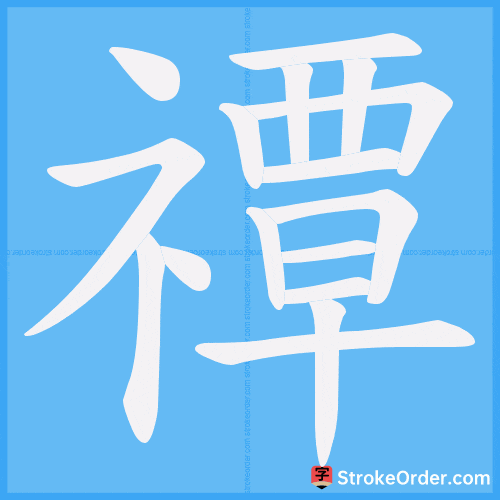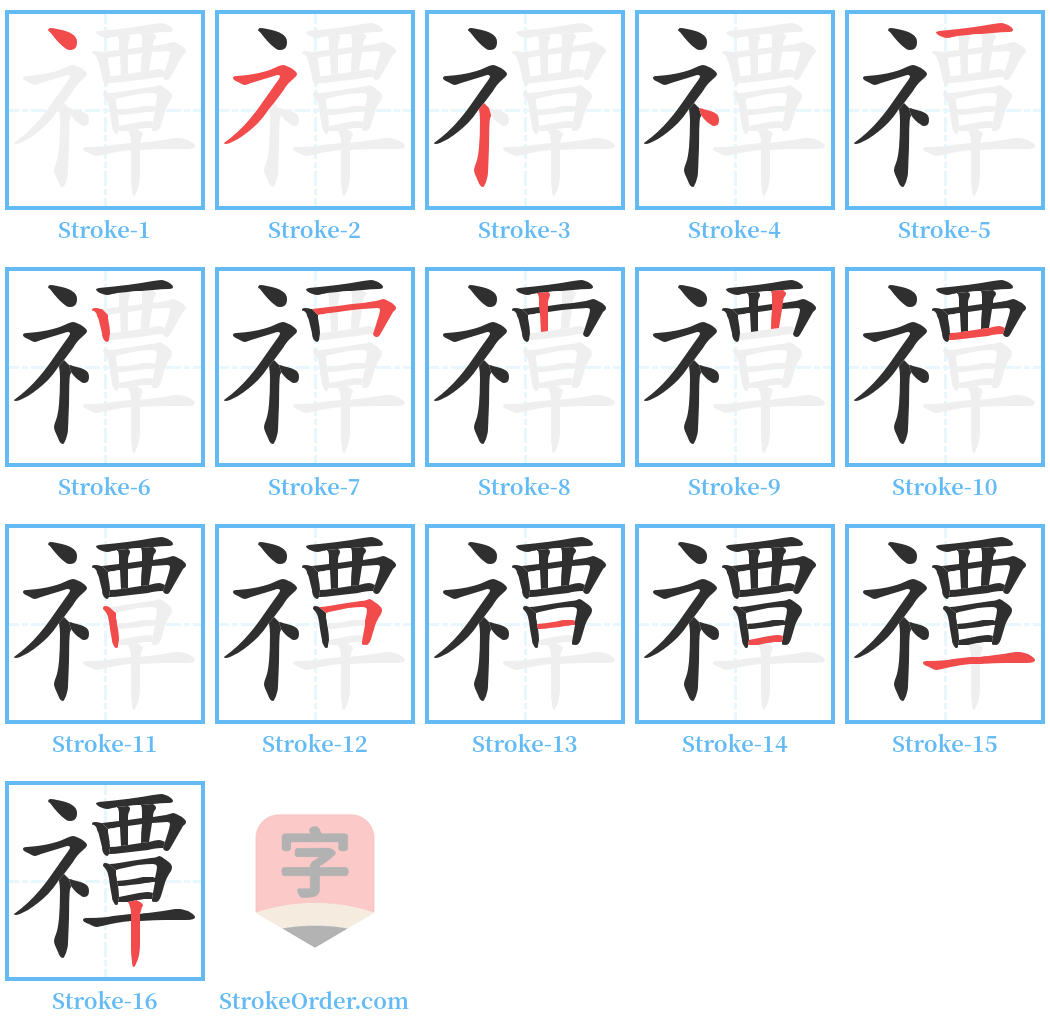禫 Stroke Order
Animated Stroke Order of 禫

Stroke Order Diagrams for 禫

Information of 禫
Pinyin
dàn
Radical
礻
Strokes
16 strokes
Usage
★★
Definition
禫 (dàn)
1. An ancient sacrificial rite held when removing mourning garments.
"In the early Jin Dynasty, it was agreed upon by Wang Su that it would be observed on the occasion of the completion of mourning, thus leading to the establishment of the system."
2. A term for sacrificial rites: In ancient times, it referred to the sacrificial rites performed by the family of the deceased upon removing their mourning apparel.
(En. (of family of the deceased) the rite for removing the mourning apparel)
3. 引用:
1. In "Shuowen Jiezi": 禫, the sacrificial rite for removing mourning garments. The character is derived from 示 (to show) and 单声 (single sound).
2. In "Yili: Shiyu": It is mentioned that 禫 (the sacrificial rite) occurs in the middle month, with annotations indicating it is a name for a ritual. There is a one-month interval from 大祥 (the greater auspiciousness) to 禫, and in total, it spans twenty-seven months.
3. The term 禫 implies a sense of calmness and peace. — Comment in "Yili: Shiyu"
4. Examples:
- 禫服 (removal of mourning garments)
- 禫除 (conducting sacrificial rites for removing mourning garments)
- 禫祭 (sacrificial rites for removing mourning garments)
5. Additional note:
A ritual for parents after the mourning period is completed, when the mourning garments are removed. As stated in "Shuowen Jiezi: 示部": "禫 refers to the sacrificial rites for removing garments."
An example from Yuan drama "Xixiangji": "This is the young lady of Minister Cui, showing great filial piety, to repay the kindness of her parents; on the day of the 禫, she will remove her mourning garments and thus do good deeds."